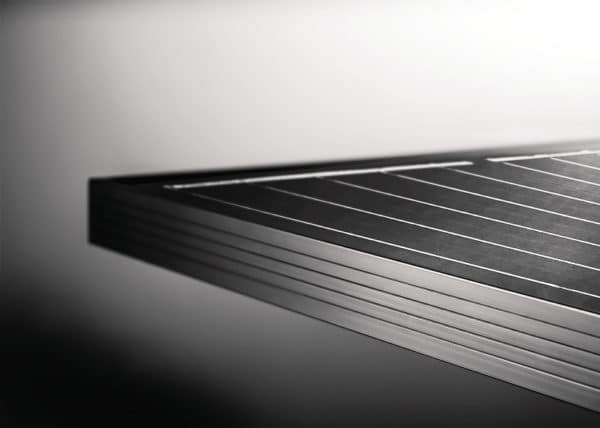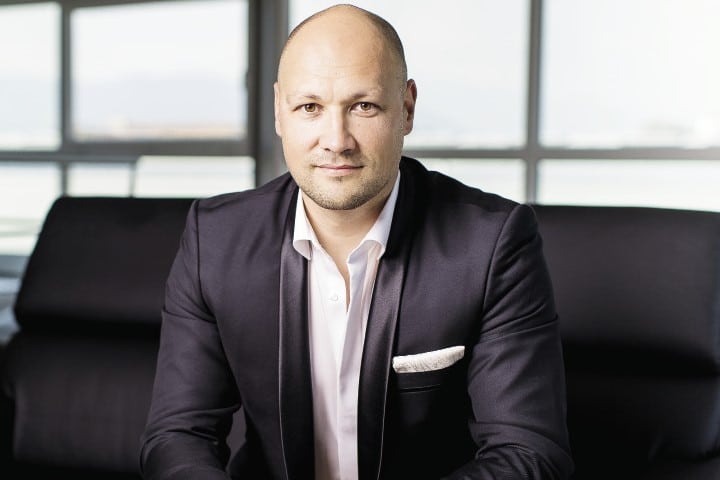The new module series from Bisol, the Supreme series, is being promoted as being a “zero degradation module.” What was the motivation behind it?
All manufacturers are striving toward higher power, but we tried to find an alternate approach based on value for the customer. We are all, in principal, using the same cells – differences are small, mainly in quality. And while there are higher efficiency cells, n-type cells, they are more expensive and often drive manufacturers towards losses jeopardizing the value of the long-term warranties. In that sense, sticking to the mainstream’s [cell technology] highly optimized cost structure, is very important. So then, how can a module manufacturer make something different? One approach is higher power, but as everyone tends to use the same cells we just see the modules getting bigger. I think, also, there are limitations when it comes to size.
My idea was to focus on the value for the customer. I asked, “what is something that the customer would and should appreciate?” The idea came from a comparison – when you are buying a German car you never ask, “what is the horsepower degradation over a number of years?” Everything naturally degrades over time. But, from the client’s point of view there’s risk in not knowing how degradation will affect module performance. It feels like the client pays for the product twice, first for the product itself and then for degradation. In my view, when you buy a PV panel, you should buy it for a certain price and at the rated power valid for the whole warranty period.
Our principle here is that the value for the customer is in not needing to worry [about degradation]. With this new trend-setting product we don’t need to speak about degradation anymore, everything is considered in the product and in the data sheet already.

Image: Bisol Group
So, is it that the nameplate that you are selling at is below the nominal power output? For example, if a Supreme module has a nameplate of 370 W, then it may actually have a nominal output of 380 W.
That’s partially the case. In principle you see the same in many other module manufacturers: They claim a power output between 0 to +5 W of the rated power, but we all know that most of the time it’s closer to zero. When you have a module that has standard degradation compared to one without it, the loss in power [on the former] adds up to around 11% or more of energy yield just within the warranty period.
If we produce modules according to our higher standards, our climate chamber shows that the modules are operational for more than 100 years – and the power drop is only 25%. I believe having high quality materials is absolutely important too.
How then are you able to reduce degradation in production?
For Bisol Supreme we say “zero effective degradation” as it is effectively zero for the client. By adding a little bit of additional power in the beginning, we can allow for small degradation later on. But it’s essential to assure overall low degradation.
We can achieve this through attention to detail in module production. Highly specialized equipment upgraded by our engineers, materials that we use and test to destruction, and our unique processes combined are essential.
Our clients should be our only perspective. It is not about price, but the value of what they like. So we are not trying to make the highest power with the largest module, but the highest value for the client.
Can you tell me more about how you achieve that in production?
For our standard modules we have our standard procedures. But with Supreme we exaggerate everything: more people on inspection, flawless procedures from input material onwards; we measure and calibrate the laminators, stringers, as well as other machines more often and we are using our own machine learning processes to do it. As a result, the product is so advanced that we are tracking everything, even the personnel, not only on production but on specific machines.
Are any production processes more important than others?
Perfect soldering and lamination cycles are vital. Of course, it is much more than just that. The main difference is that you do not focus predominantly on maximizing the throughput and therefore the cost per unit – hence Supreme modules are more expensive. But it is a combination of things. The thickness of the EVA is important. Thinner EVA foils can be linked to PID degradation. Gel content is important. For example, EVA manufacturers will tell you that EVA content of around 65% is sufficient, but we go far beyond that. We know that this reduces the nominal operating cell temperature and improves the performance of the module. A total number of solder joints play a vital role in low degradation process too, and more.
As a module producer with a relatively long track record, what are your tips for survival?
I believe in keeping the client in focus. We’ve had good clients in the Benelux region and other countries since 2008 and 2009, for some we are the only manufacturer that still has product on their shelves – a good testimonial. Everyone can expand capacity almost overnight. But it is more about how to penetrate the market and be successful doing it. Getting big can often turn into getting too big, and then the lowest price becomes the only driving factor to sell. With the lowest price, you will never receive the best quality.
And for a European module maker in particular?
Around 20% of the market is accessible to European manufacturers, even less because of price. And sometimes I am quite surprised by the market share we have in Austria, France and the Benelux.
When it comes to European competition, we are extremely successful in managing our expenses. There are not many companies worldwide and particularly in Europe in which management is totally aware of the cost structures. Over the last 15 years or more, we have been focused on keeping costs under control and then focusing on what the clients really need. After all the downturns and all the periods of consolidation, we have never registered losses, which is almost unbelievable.
A good example is when our sales manager in Belgium told me that clients wanted “all black” modules. At first, I thought this was outrageous, because it’s better to have a white backsheet for temperatures and higher power. But clearly it was wanted. We are not the ones to tell the market what they want: It is our job to listen and to respond.
As a result, we were one of the first module makers on the market with an “all black” module and within three or four years everyone had followed. I believe we are doing the same here with the “zero degradation” Supreme. The client buys the module and shouldn’t worry about degradation.
Bisol by numbers
2021 sales forecast:
- 400 MW to 420 MW
- Residential: 45%
- Commercial: 30%
- Industrial: 15%
- Revamping: 10%
This content is protected by copyright and may not be reused. If you want to cooperate with us and would like to reuse some of our content, please contact: editors@pv-magazine.com.

